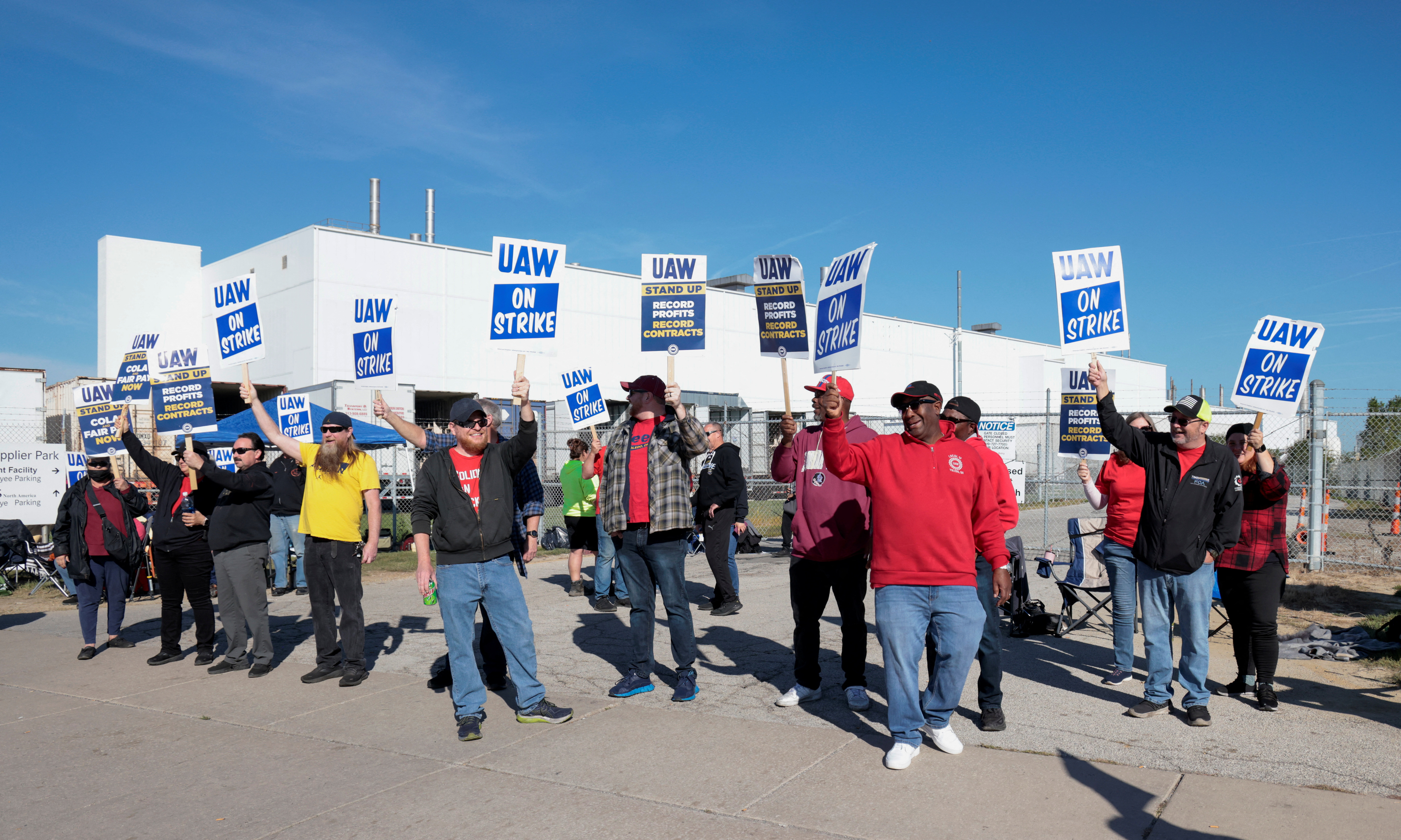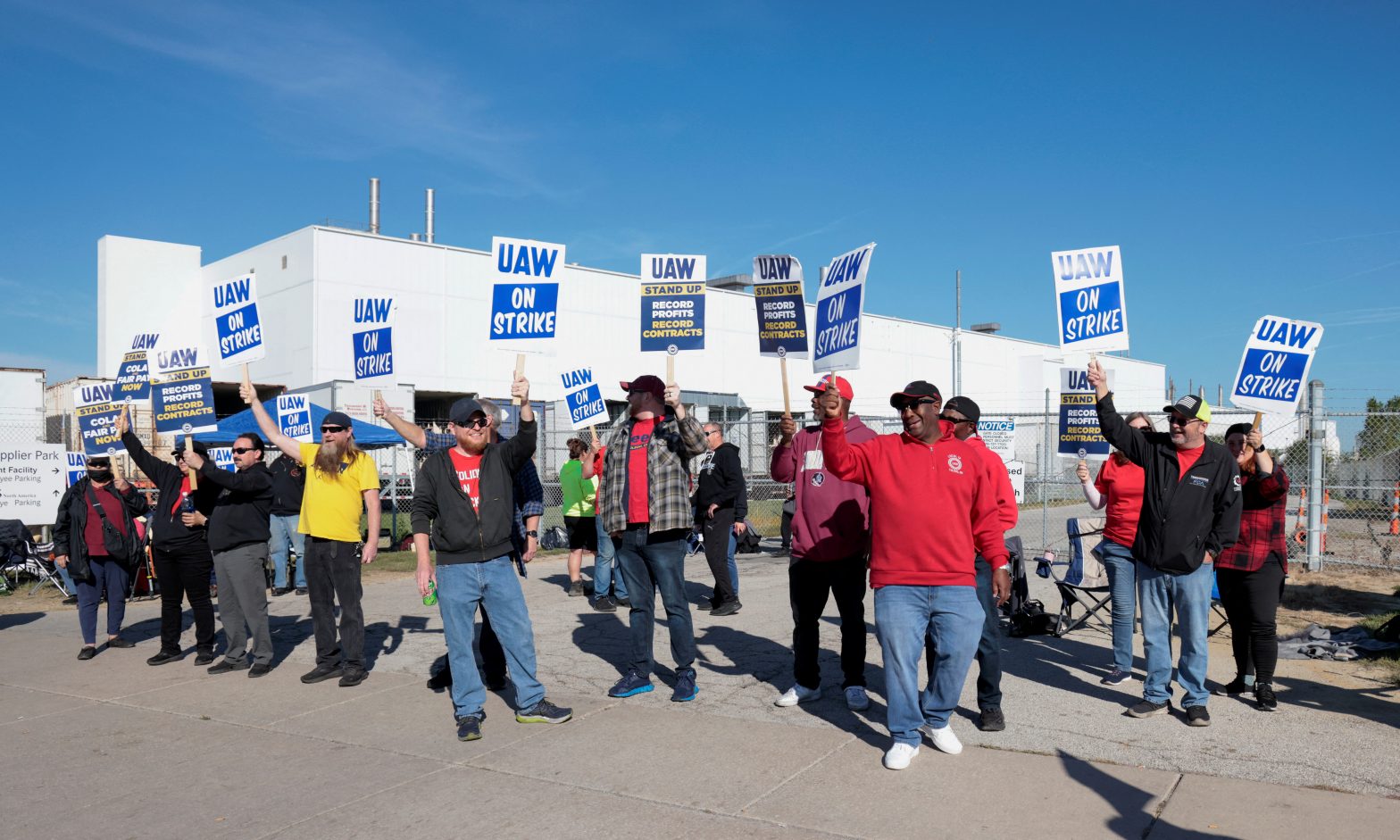
Striking United Auto Workers members picket outside the Stellantis Jeep plant in Toledo, Ohio, U.S. September 19, 2023. REUTERS/Rebecca Cook Acquire Licensing Rights
WASHINGTON, Sept 20 (Reuters) – When the CEO gets a 40% raise, what do the workers deserve?
That question is at the heart of the United Auto Workers union’s strikes at assembly plants owned by Ford (F.N), General Motors (GM.N) and Chrysler parent Stellantis (STLAM.MI).
UAW President Shawn Fain initially asked for a 40% increase in worker’s pay over the next four years – a figure based off an approximately 40% increase in CEO pay at the companies over the last four years at a time of stable profits for two of the three automakers.
U.S. auto companies are not alone in handing out massive payouts to chief executives.
CEO pay and benefits have skyrocketed in recent decades, but worker pay has not kept pace.
The ratio of CEO pay to the average, non-supervisory production worker at the biggest U.S. companies has jumped from less than 40 to 1 over the last four decades to nearly 400 to 1, the Economic Policy Institute calculated in 2022.
In contrast, some workers for the Big Three automakers who were protesting on the Ohio to Michigan highway this week said they needed to work two jobs to survive.
Restructuring the U.S. economy to make things more “fair” for workers and voters has been a long-stated goal of President Joe Biden’s economic plan. Capitalism is supposed to work “for the good of the American people,” Biden has said, but decades of “trickle down” tax cuts for companies and the wealthy in the U.S. have undermined the system.
As the strikes began last week, Biden echoed Fain, saying automakers should offer more of the share of their profits to workers. But the White House has little leverage besides the bully pulpit and is studying how to stave off the economic impact of a long-term walkout instead.
Attempts to address rising CEO pay in decades past have not had the intended effect, said Rosanna Landis Weaver, director of wage justice and CEO pay at As You Sow, a non-profit shareholder advocacy group.
Salaries were held down, but compensating top executives through the use of stock options that many considered “free money” increased, she said.
“Anytime you tried to squeeze pay in one area it popped out in another – the balloon was never squeezed enough to pop, just enough for the air to go somewhere else.”
Reporting by Heather Timmons and David Gaffen; Editing by Jamie Freed
Our Standards: The Thomson Reuters Trust Principles.
